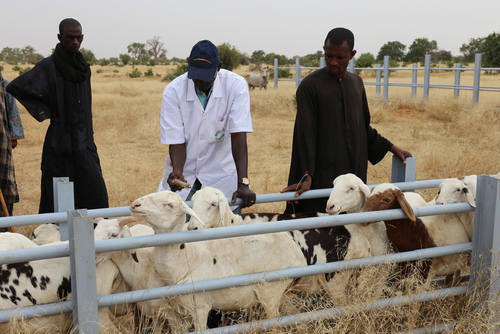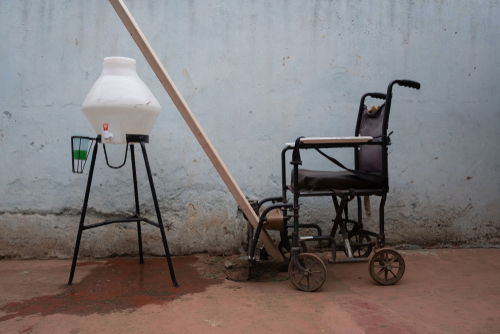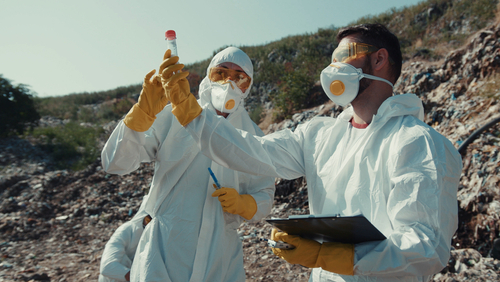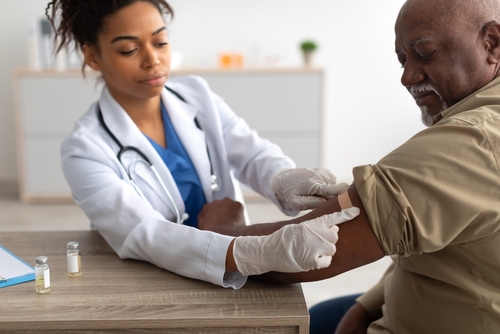December 11, 2023

The effectiveness of the Euvichol oral cholera vaccine is comparable to the existing Shanchol vaccine.
Researchers conducted a case-control study to determine the vaccine effectiveness (VE) of the pre-qualified two-dose Euvichol cholera vaccine following an oral cholera vaccine (OCV) campaign in Mirebalais, Haiti. Cases were defined as individuals with acute watery diarrhea who tested positive for the V. cholerae ctxA gene on RT-PCR. Multivariable matched analysis showed that the adjusted risk ratio of cholera among those who received two doses of Euvichol was 0.31 (95% CI: 0.06-1.71), which corresponds to an adjusted VE of 69.0 percent (95% CI: 71.0%-94.0%). These results are consistent with the other two-dose OCV, Shanchol, also available for mass vaccination campaigns. Euvichol can be rolled out at a larger scale in conjunction with existing cholera control and prevention efforts. [International Journal of Infectious Diseases]
High-quality research is needed to assess the potential role of telephone hotlines in outbreak response.
A systematic analysis and meta-analysis of articles published between January 1995 and August 2020 assessed the role and effectiveness of local and national telephone hotlines in disease outbreak response in Africa. Out of 332,323 alerts generated by the hotlines, 67,658 met the case definition of the corresponding disease. The sensitivity of hotlines in generating accurate alerts of a true outbreak was 41 percent (95% CI: 24%-59%) for local hotlines and 26 percent (95% CI: 5%-47%) for national hotlines, with an overall pooled sensitivity of 38 percent (95% CI: 24%-52%). Vaccination confirmation was conducted by hotline in one study and revealed an increase in polio vaccination coverage in Chad from 43 percent to 95 percent after intervention. Methodological flaws in the included studies highlighted key limitations of current data on hotline effectiveness and point to a need for robust qualitative and quantitative studies to outline the potential role of hotlines in disease outbreaks. [PLOS One]
Wastewater mpox virus detection necessitates a multi-assay approach in low-prevalence areas.
Three molecular assays targeting the C22L, F3L, and F8L genes associated with the mpox virus were used to detect mpox in wastewater samples from El Paso, Texas, between February and March 2023. They found that the F3L assay detected mpox virus DNA in a greater number of samples (70.8 percent) followed by C22L ( 58.3 percent) and the F8L assay (12.5 percent) of samples. Increased mpox virus concentrations were observed in the wastewater samples at the end of February, with a peak in the week of March 6, 5 days before the latest case in the study period was identified. A combined approach with multiple molecular assays can enhance the detection of mpox virus in wastewater and predict case identification in a region with relatively low mpox prevalence. [The Lancet Regional Health – Americas]
Reviewing the current state of antifungal drug research and development
A review article presents findings from a critical analysis of antifungal drug research worldwide from 2010 onwards. The analysis revealed a wide variety of candidate structures and processes targeted by antifungal agents, including ergosterol, the fungal cell wall, reactive oxygen and nitrogen species (ROS and RNS), and nucleic acid synthesis. The inclusion of 21 antifungal drug patents and 13 ongoing clinical trials since 2010 highlights the continual growth and diversity of antifungal therapeutics. [European Journal of Medicinal Chemistry Reports]
Highlights from the WHO World Malaria Report 2023
The WHO published the World malaria report 2023, which outlines growing evidence on the relationship between malaria and climate change. While vaccination efforts have been successful, with rollouts of the RTS,S/A01 vaccine and WHO recommendations of the R21/Matrix-M vaccine in 2023, the incidence of malaria in 85 malaria-endemic countries in 2022 increased to an estimated 249 million cases, 5 million greater than in 2021. Several factors may account for this increase, including the 2022 floods in Pakistan (resulting in a five-fold increase in the national incidence), humanitarian crises, and the COVID-19 pandemic. Given the recent rise in malaria incidence, maintaining the current state of malaria interventions will stall progress and lead to dramatic increases in the burden of malaria worldwide. Scaled-up knowledge of the climate change-malaria nexus is urgently needed to build resilient responses to future malaria epidemics in the face of a worsening climate crisis. [WHO]
The association between care-seeking behavior and multidrug-resistant TB risk.
An unmatched case-control study from the Cape Coast Teaching Hospital of Ghana conducted between January 2018 and December 2020 investigated predictors of multidrug-resistant TB (MDR-TB). The study found that the odds of having MDR-TB were lower among individuals who lived in a household with more than one room than those living in a single-room household (adjusted OR = 0.37; 95% CI: 0.14-0.99). Furthermore, the odds of MDR-TB were lower among those who received the BCG vaccine than those who did not (aOR = 0.17; 95% CI: 0.07-0.45). People who lived farther from a health facility were four times as likely to develop MDR-TB than those who lived close to a health facility (aOR = 4.11; 95% CI: 1.55-10.87). A notable finding in this study is that individuals who visited a health facility upon noticing initial signs of TB were four times as likely to have MDR-TB than those who did not seek care as quickly (aOR = 4.22; 95% CI: 1.31-13.64). The role of care-seeking behavior in MDR-TB diagnostics and treatment outcomes merits further exploration, particularly in settings that rely heavily on traditional and alternative healing practices. [PLOS One]
Mapping rotavirus genotypes identified through the Global Rotavirus Surveillance Network
An ecological study analyzed genotype data of over 16,000 rotavirus isolates from children under 5 years old hospitalized with acute watery diarrhea between 2014 and 2018 in 40 countries participating in the WHO-coordinated Global Rotavirus Surveillance Network. Analysis of the specimens showed that the most frequent genotypes identified worldwide were G1P[8] (31 percent), G1P[6] (8 percent), and G3P[8] (8 percent). The G1P[8] genotype – the most frequent genotype isolated in the African Region and the second most frequent genotype identified in the European Region – was higher in countries that had not yet introduced the rotavirus vaccine. The study also showed that rare rotavirus genotypes G3P[8], G9P[8], and G12P[8] are circulating globally regardless of vaccine introduction, indicating that the emergence or re-emergence of certain genotypes may not always be associated with a country’s vaccination status. [PLOS Global Public Health]
COVID-19 vaccination is not linked to unexplained sudden deaths among adults in India.
A matched case-control study involving 729 patients aged 18-45 from 47 tertiary care hospitals in India and 2,916 controls investigated risk factors associated with unexplained sudden death among apparently healthy adults. Each case consisting of apparently healthy adults who died suddenly within 24 hours of hospitalization was matched with 4 controls of the same age and gender from the same neighborhood between October and March 2023. Adjusting for all other variables, the study found that two doses of COVID-19 vaccination lowered the risk of sudden death (aOR 0.51, 0.28 – 0.91). However, factors such as family history of sudden death, COVID-19 hospitalization, binge drinking, and smoking were positively associated with sudden death among young adults.[Indian Journal of Medical Research]
Image from Canva











